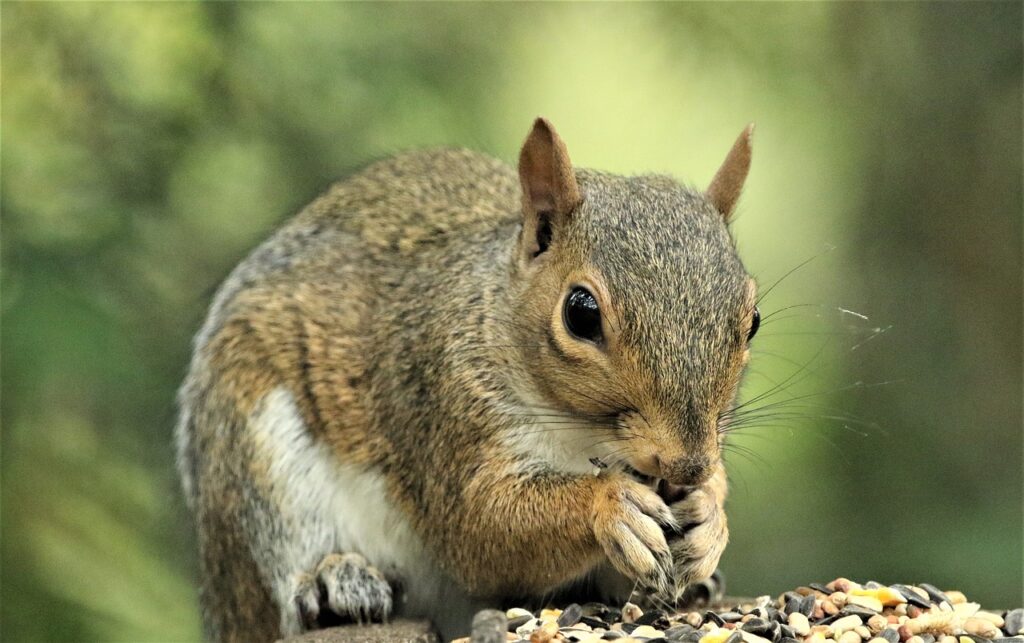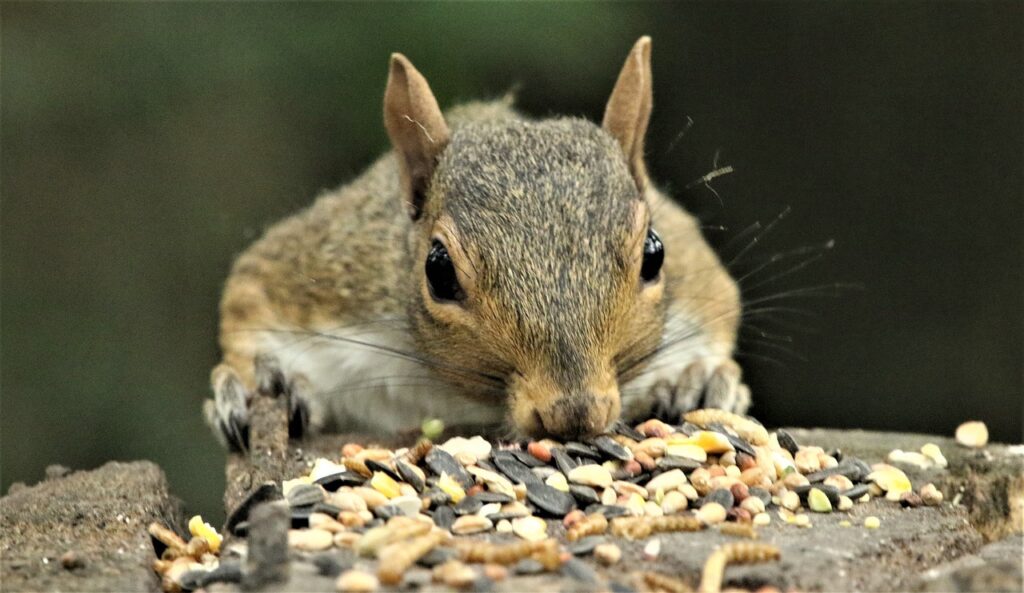Discover fascinating squirrel facts, from their incredible agility to their vital role in ecosystems. Learn everything about these playful creatures!
Squirrels are one of the most common and entertaining animals in our world. Whether you see them darting around parks or hanging out in your backyard, squirrels are often a source of amusement. But there’s so much more to these little critters than meets the eye. From their incredible agility to their habits and environmental impact, squirrels are truly fascinating creatures.
In this post, we’ll explore everything you need to know about squirrels – their behavior, types, habits, and even how you can get involved in squirrel conservation. Get comfortable, as we dive deep into the world of squirrels.
Why Are Squirrels So Interesting?
You’ve probably seen a squirrel perched on a tree or racing across the grass, their fluffy tails flicking in excitement. They are undoubtedly cute and full of energy, but there’s more to their behavior than just that. Squirrels are intelligent and have some seriously cool survival tricks up their sleeves.
One of the things that make squirrels so interesting is their ability to adapt to almost any environment. From dense forests to urban areas, they’ve managed to thrive in a variety of habitats. This adaptability is a testament to their resilience and cleverness, traits that make them stand out in the animal kingdom.
Types of Squirrels: More Than Just the Grey Ones
There are three main types of squirrels that you’re most likely to encounter: tree squirrels, ground squirrels, and flying squirrels. Each of these types has its own unique characteristics and lifestyle.
1. Tree Squirrels
Tree squirrels are what most people think of when they picture a squirrel. These furry critters are incredibly agile climbers, known for leaping from tree to tree with seemingly no fear. They primarily live in forests and urban parks, where they nest in the branches of trees.
Some well-known species include the Eastern Grey Squirrel, Fox Squirrel, and the Red Squirrel. These squirrels are famous for their large, bushy tails, which they use for balance and to keep themselves warm during cold weather.
2. Ground Squirrels
Ground squirrels, as the name suggests, are more likely to be found on the ground than in trees. These squirrels dig complex burrow systems where they live and store food. They are most commonly seen in open grasslands and are much more social than their tree-dwelling cousins.
The California Ground Squirrel is one of the most commonly seen ground squirrels, often spotted sunbathing or eating in suburban areas.
3. Flying Squirrels
Flying squirrels are fascinating creatures, thanks to their ability to glide from one tree to another. While they don’t technically “fly,” they have a special membrane of skin, called a patagium, that stretches between their limbs and tail, allowing them to glide for up to 150 feet.
Flying squirrels are typically nocturnal, which means they’re often less visible to us during the day. They tend to live in wooded areas and prefer to stay hidden in their nests during daylight hours.
The Remarkable Agility of Squirrels
Squirrels are known for their incredible agility. Watching a squirrel leap from one branch to another, often without hesitation, is a testament to their natural acrobatics. But what makes squirrels so agile?
A squirrel’s body is designed for quick movements. They have strong back legs that allow them to jump great distances, while their long, bushy tails help them balance as they navigate narrow surfaces or perform high-speed chases. The tail also helps them regulate their body temperature, keeping them warm during colder months.
Did you know that squirrels can leap up to 10 times their body length in a single jump? That’s pretty impressive for an animal that’s only a few pounds in weight!

How Squirrels Communicate
Squirrels have a variety of ways to communicate with each other, from tail movements to vocalizations. They use their tails to signal to other squirrels when they’re feeling threatened or excited. For instance, when a squirrel is startled or sees a predator, it might flick its tail rapidly to signal danger.
In addition to tail flicks, squirrels use high-pitched vocalizations to communicate, especially during mating seasons or when they’re warning others of potential threats. They also employ scent marking, rubbing their face against trees or other surfaces to leave a trail for other squirrels to follow.
A Squirrel’s Diet: What Do They Eat?
Squirrels are primarily herbivores, although they do occasionally eat small insects or bird eggs. Their diet mainly consists of nuts, seeds, fruits, fungi, and occasionally bark. The nuts they love include acorns, hazelnuts, and walnuts – they’ll even bury these to save them for later during the colder months.
One interesting thing about squirrels is how they gather and store their food. This behavior is called “caching,” and squirrels are excellent at hiding food in the ground, trees, and even your backyard. When they bury food, squirrels rely on their excellent memory to remember the locations. However, many of the caches are forgotten, which leads to new plants and trees sprouting in areas they might not have otherwise.
Squirrel’s Lifespan and Reproduction
On average, a squirrel’s lifespan in the wild is about 6-12 months due to predators, disease, and accidents. However, if they survive their first year, squirrels can live up to 10 years in the wild. Domestic squirrels, living in safer environments with fewer predators, can often live longer.
Squirrels typically breed twice a year, once in the winter and again in the summer. During mating season, male squirrels will compete for the attention of females, often engaging in chase scenes that can be quite dramatic!
Female squirrels usually give birth to 2-8 baby squirrels, called kits or pups. The babies stay with their mother for about 10 weeks before becoming independent. Squirrels are highly protective of their young, keeping them hidden in nests that are often built in trees or tucked away in attic spaces (which is something we often deal with when they make their way into our homes!).
The Environmental Impact of Squirrels
While squirrels are often seen as just a part of nature’s scenery, they play an important role in their ecosystems. As mentioned earlier, their habit of burying food helps plant new trees and plants. This makes them vital contributors to maintaining forests and plant life.
In urban environments, squirrels help spread seeds and contribute to the growth of plants and trees in places like parks, gardens, and even cities. Their activities, while sometimes mischievous, help foster biodiversity and healthy plant growth in their habitats.
However, squirrels can also have a negative impact when their populations become too large, especially in urban areas. They can cause damage to trees, crops, and even homes. In many cases, squirrels can chew through electrical wiring or insulation, which can be expensive to repair.
Fun Facts About Squirrels
- Squirrels have four sharp, strong incisor teeth that grow constantly throughout their lives. This is why they are always chewing on something – they need to keep their teeth filed down!
- Squirrels are great jumpers, but they also have impressive climbing skills. Their claws can grip tightly onto tree trunks, allowing them to scale nearly vertical surfaces.
- A squirrel’s tail serves as a warning flag to predators and is used to maintain balance during jumps. It also keeps them warm during the winter.
- Squirrels are active all year round, even in winter. However, during the cold months, they reduce their activity and spend more time in their nests.
- A group of squirrels is called a “scurry,” which is a fitting name for these hyperactive creatures!

Squirrel Conservation and What You Can Do
Despite their prevalence in urban and suburban areas, squirrels face threats in the wild, particularly due to habitat loss and environmental changes. As cities expand and forests are cleared, squirrels are forced to move into new areas, sometimes causing conflict with humans.
One way to help squirrels is by providing them with safe spaces to live. If you have a garden or backyard, you can make your property squirrel-friendly by planting trees that provide shelter and food sources. Additionally, you can avoid using pesticides and chemicals that could harm them.
It’s also important to consider their safety in urban environments. Making sure they have access to green spaces and avoiding disturbing their nests can go a long way in ensuring the well-being of local squirrel populations.
Final Thoughts: Why We Should Appreciate Squirrels
Squirrels are more than just adorable creatures scampering around. They are integral parts of our ecosystems, helping to maintain plant life, spread seeds, and provide entertainment with their antics. While they may sometimes be seen as pests in urban areas, it’s important to appreciate the role they play in nature.
So the next time you see a squirrel running across your path or leaping from tree to tree, take a moment to appreciate their agility, intelligence, and contribution to the world around us. And who knows – you might even find yourself a little more curious about these lively creatures than you were before.
Remember, squirrels are a part of our natural world, and understanding them helps us coexist with them in a way that’s beneficial for both humans and wildlife. Let’s work to protect them and ensure they thrive for generations to come.
Looking for the perfect cuddle buddy? Meet your new best friend – the adorable Red Squirrel Stuffed Animal! Click here to bring home this playful companion today!
